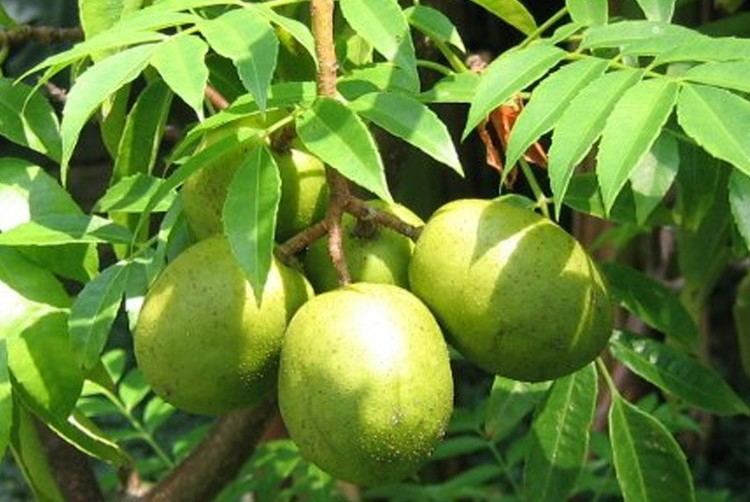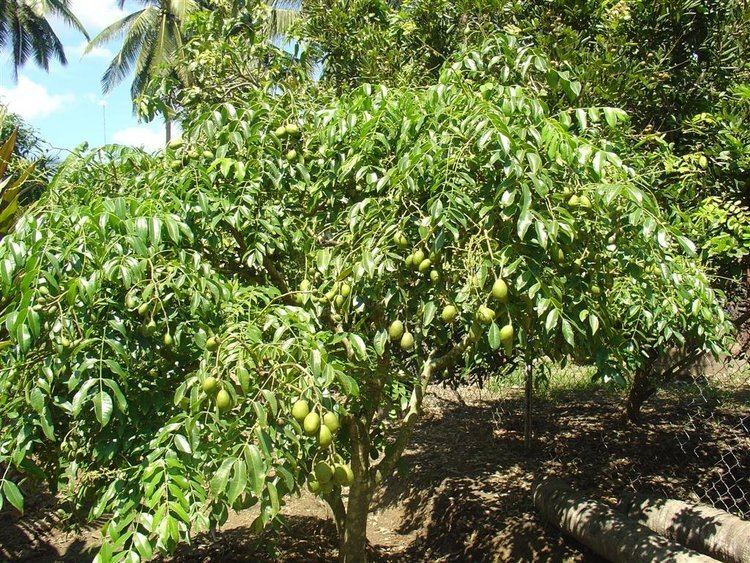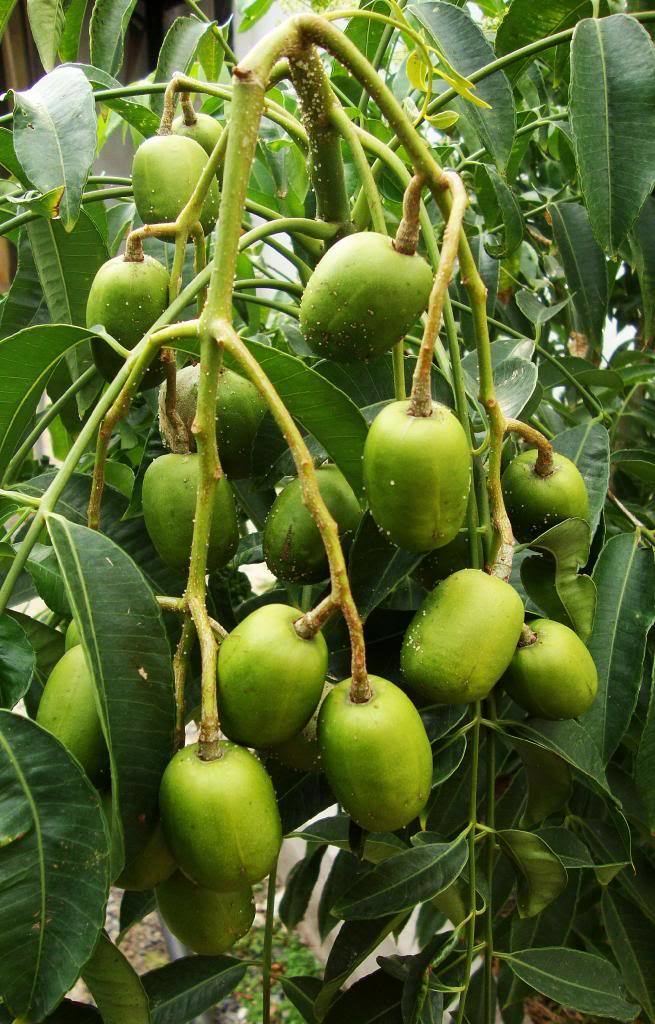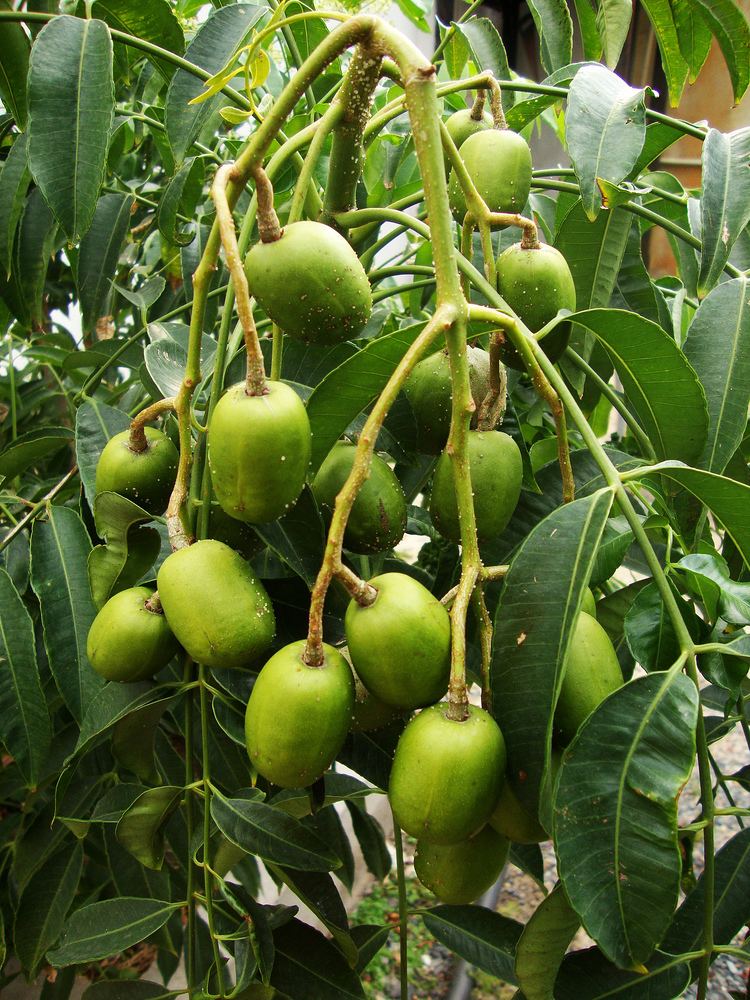Rank Species | Genus Spondias Higher classification Spondias | |
 | ||
Similar Spondias, Spondias mombin, Watery rose apple, Spondias purpurea, Sapodilla | ||
Spondias dulcis ambarella
Spondias dulcis (syn. Spondias cytherea), known commonly as ambarella, or jew plum is an equatorial or tropical tree, with edible fruit containing a fibrous pit. It is known by many other names in various regions, including kedondong in Indonesia and in Malaysia, buah long long among the Chinese population in Singapore, pomme cythere in Trinidad and Tobago, Dominica, Guadeloupe, and Martinique, June plum in Bermuda and Jamaica, mangotín in Panama, juplon in Costa Rica, golden apple in Barbados and Guyana, golden plum in Belize, jobo indio in Venezuela, cajá-manga and cajarana in Brazil and São Tomé and Príncipe, quả cóc in Vietnam, /məkaʔ/ (ម្កាក់) in Cambodia, manzana de oro in Dominican Republic, cas mango in Cameroon,Maldives, Vī in Tonga and Hawaii.අඹරෙල්ල ambarella in Sri Lanka
Contents
- Spondias dulcis ambarella
- Spondias dulcis ambarella or hog plum of malaysia
- Description
- Habitat
- As food
- Vernacular names
- References

Spondias dulcis ambarella or hog plum of malaysia
Description

This fast-growing tree can reach up to 20 m (66 ft) in its native range of Melanesia and Polynesia; however, it usually averages 10–12 m (30–40 ft) in other areas. Spondias dulcis has deciduous, pinnate leaves, 20–60 cm (8–24 in) in length, composed of 9 to 25 glossy, elliptic or obovate-oblong leaflets 9–10 cm (3.5–3.9 in) long, which are finely toothed toward the apex. The tree produces small, inconspicuous white flowers in terminal panicles. Its oval fruits, 6–9 cm (2.4–3.5 in) long, are borne in bunches of 12 or more on a long stalk. Over several weeks, the fruit fall to the ground while still green and hard, then turn golden-yellow as they ripen. According to Morton (1987), "some fruits in the South Sea Islands weigh over 500 g (1 lb) each."
Habitat

S. dulcis has been introduced into tropical areas across the world. It was brought to Jamaica in 1782, and it is cultivated in Panama, Cuba, Haiti, the Dominican Republic, Puerto Rico, Trinidad and Tobago, and eastern Sucre in Venezuela. The United States Department of Agriculture received seeds from Liberia in 1909, but it did not become a popular crop in the US. Nevertheless, it is grown in South Florida as far north as Palm Beach County.The fruit is also widely grown in Somalia's agriculture belt, probably introduced during the colonial times preceding 1960.
As food

Spondias dulcis is most commonly used as a food source. In West Java, its young leaves are used as seasoning for pepes. In Costa Rica, the more mature leaves are also eaten as a salad green though they are tart. However, it is most commonly used for its fruit.

The fruit may be eaten raw; the flesh is crunchy and a little sour. According to Boning (2006): "The fruit is best when fully colored, but still somewhat crunchy. At this stage, it has a pineapple-mango flavor. The flesh is golden in color, very juicy, vaguely sweet, but with a hint of tart acidity." In Indonesia and Malaysia, it is eaten with shrimp paste, a thick, black, salty-sweet sauce called hayko in the Southern Min dialect of Chinese. It is an ingredient in rujak in Indonesia and rojak in Malaysia. The juice is called kedondong in Indonesia, amra in Malaysia, and balonglong in Singapore.

The fruit is made into preserves and flavorings for sauces, soups, and stews. In Fiji it is made into jam. In Samoa and Tonga it is used to make otai. In Sri Lanka the fruit is soaked in vinegar with chili and other spices to make the snack food acharu. In Vietnam the unripe fruit is eaten with salt, sugar, and chili, or with shrimp paste. Children eat the fruit macerated in artificially sweetened licorice extract. In Jamaica, it is mostly considered a novelty, especially by children. It can be eaten with salt or made into a drink sweetened with sugar and spiced with ginger. In Trinidad and Tobago, it is curried, sweetened, salted, or flavored with pepper sauce and spices. In Cambodia it is made into a salad called nhoam mkak (/ɲŏam məkaʔ/ ញាំម្កាក់). In Suriname, the fruit is dried and made into a spicy chutney, mixed with garlic and peppers. In Thai cuisine both the fruits and the tender leaves are eaten.
Vernacular names
އަނބުޅަ - Republic of Maldives]]
